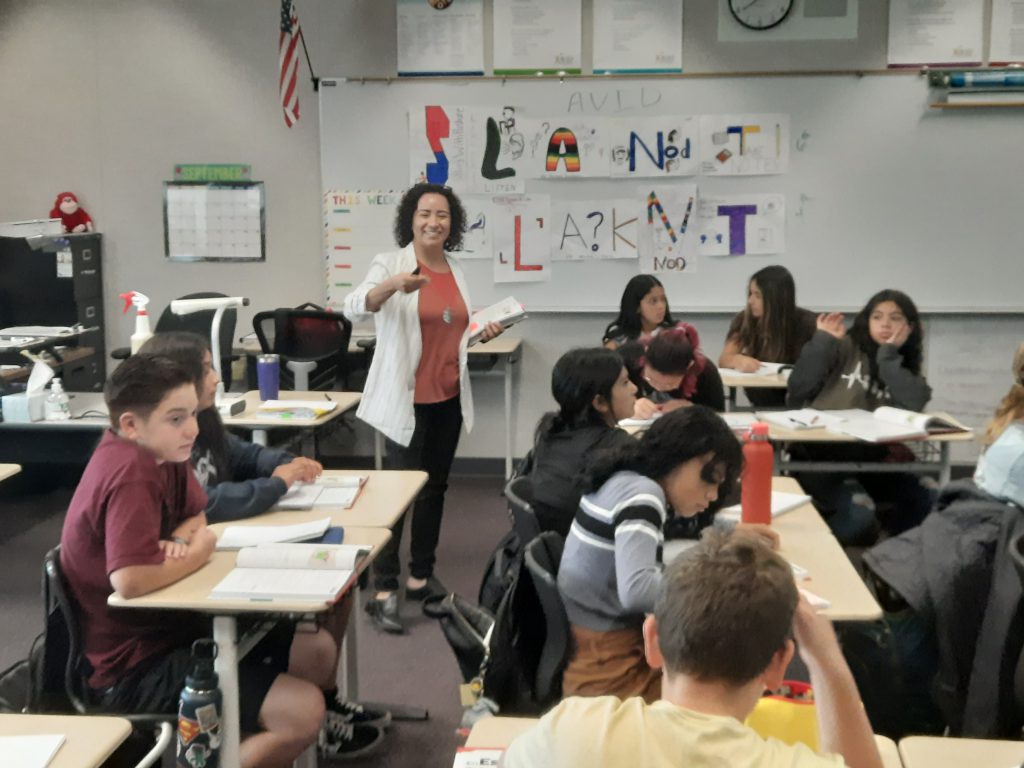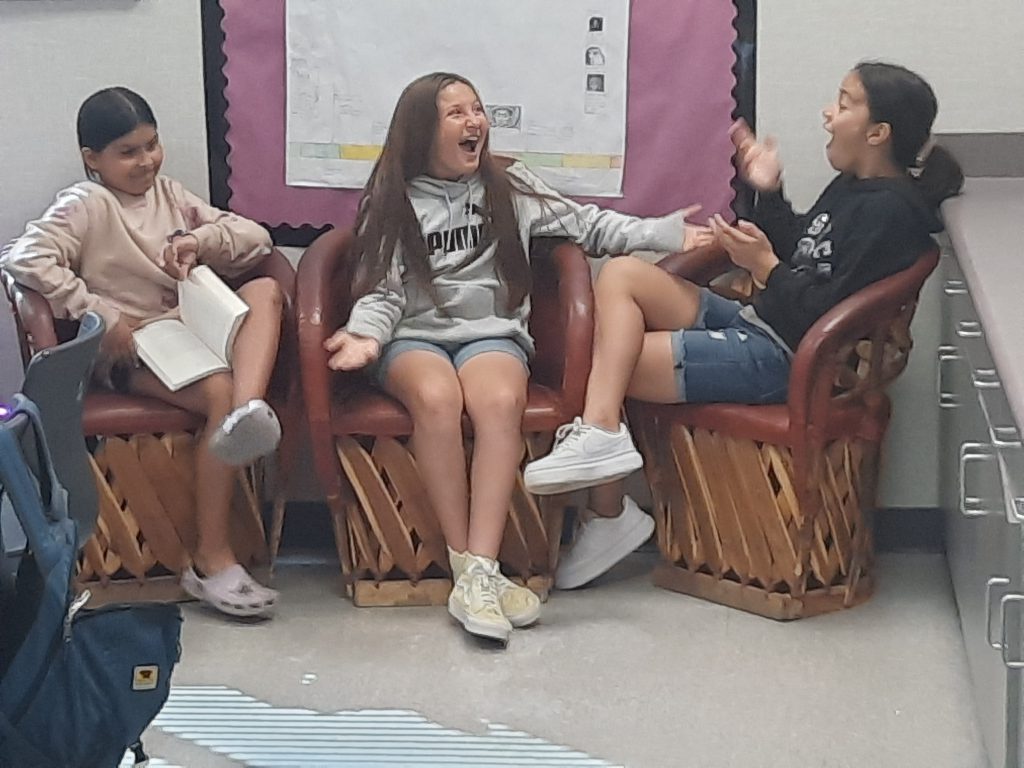
Perhaps the most important promise made to parents eight years ago when Denair Unified created its Dual Language Immersion (DLI) program was this one: the district was committed to growing the English/Spanish program from kindergarten and the elementary grades through middle school and all the way into high school.
It was an obligation the district embraced and from which it has never wavered. It has endured through leadership changes at the district and school levels, the addition of new teachers each year and a global pandemic that presented its own challenges.
“When I came to the district five years ago, the DUSD Governing Board made it very clear that the Dual Language program was a high priority,” Superintendent Terry Metzger said. “We have families who have already invested eight years in the program. We recognize that our parents trust us as a district to follow through with a comprehensive program that will benefit their children far into the future.”
Today, the first group of DLI students who began as 5-year-old kindergartners are in seventh grade at Denair Middle School. There are now DLI classes stacked up at every grade level behind them – 252 children in all who are in the process of becoming bilingual, biliterate and bicultural.
District officials are very aware that the oldest group of students will be high school freshmen in less than two years. Discussions have begun about what a DLI program might look like at the high school level, though no decisions have been made yet.
“We’re trying to set them up for success in whatever we do,” said Metzger.
One possibility to continue building fluency in Spanish is to have the DLI freshman take Spanish 3, which would typically be the third-year course taken by juniors or seniors. Another option for the most accomplished DLI students would be to move them directly into AP Spanish, the highest level offered at Denair High.
One of the key questions with the AP alternative, middle school Principal Gabriela Sarmiento admitted, is whether freshmen would be “academically and emotionally ready” to take and succeed in any AP course – Spanish or otherwise.
“The pressure is high in AP Spanish and the workload is immense,” Metzger acknowledged.
The larger goal, of course, is to make sure all the DLI students will graduate and be fluent in two languages. The hope is by the time they are high school juniors, they can take and pass the countywide test that will certify them as biliterate, which will earn them a special seal on their high school diplomas and be an asset on their college applications.
“We’re committed to ensuring that our DLI students complete a program that results in not only the Seal of Biliteracy, but also real-world skills that will help them be successful after high school graduation,” said Metzger.

What DLI looks like in middle school
Some of the district’s DLI students come from families who speak Spanish at home. Others are from households where only English is spoken. Regardless, all of them are learning to read, write and speak in two languages – a skill that can only help them well beyond their school days.
There are 21 DLI students in seventh grade. About half – including twins Henry and Brooke De La Motte – were members of the original class. Others, like Isaac Maldonado, have transferred to Denair through the years after beginning in DLI programs in other districts.
Sarmiento, whose son Victor is one of those seventh-graders, said the first group of students will always share a special bond and have developed a noticeable camaraderie.
“Their teachers have said they are very collaborative,” she said. “They’re comfortable with one another and are easy to get along with. And while we don’t want to separate our DLI students (from their English-only peers), they recognize that they have something in common.”
The De La Motte twins come from a family that doesn’t have any bilingual history.
“Our parents thought it would help improve our lives and help us with language skills” by enrolling them in the DLI program, Henry explained.
He said he started really comprehending Spanish in the second grade.
“First, I began to understand words and then came writing and speaking,” said Henry. “Once you get the hang of it, it’s easy.”
His favorite part of learning the language is being able to speak it, something his parents encourage he and his sister to do whenever they encounter native Spanish speakers. Henry also would like to travel to Mexcio one day to use his language skills and learn more about the culture there.
Maldonado joined Denair’s DLI program as a fifth-grader after being part of a similar system in Delhi. His mother is from Mexico, so he had exposure to Spanish before he began school. Moving between the two languages is second nature to him.
“Learning two languages is good. I’m proud that I can do it,” he said.
His favorite class is math – which is taught in English – “just because I’m good at it.”
By design, the elementary and middle school DLI programs are different.
At Denair Elementary Charter Academy, the DLI students at each grade level stay together for the entire day with one teacher. Some subjects are taught in Spanish; others in English. There is more Spanish at the younger grade levels, a ratio that eventually balances out at about 50-50 by fifth grade. Regardless of language, the curriculum is the same as what the English-only students are taught.
Starting in sixth grade at DMS, students begin to rotate among teachers for different subjects. Three of the sixth-graders’ seven classes (Spanish Language Arts, world history and an exploratory elective focused on Spanish literature and culture) are taught in Spanish; all other subjects are in English. In seventh grade, the Spanish elective goes away. That likely will be the case next year as well when eighth grade is added, Sarmiento said.
Sarmiento believes it’s important not to segregate the DLI students from their English-only peers on campus, which can be a scheduling challenge given the campus only has about 250 students. That’s why DLI students are encouraged to join clubs, play sports and participate in other extracurricular activities.
Still, their inclusion in the DLI program always will set them apart.
“They are held to higher expectations,” Sarmiento acknowledged. “There is more work output expected of them. With higher academic words and phrases, they must know and recognize their significance in Spanish and English. By virtue of being in the program, they are forced to work harder.”
Metzger expects Denair’s DLI program to continue to grow as more and more parents recognize the long-term value provided to their children.
“Aside from the fact that having a multicultural perspective helps people be more accepting of diverse viewpoints, the reality is that we live and work in a global economy,” she said. “Speaking more than one language can definitely open up new and better opportunities.”
